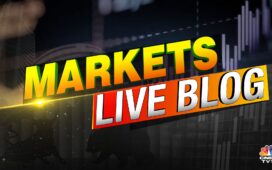Pooja Jain, Senior Software Engineer at Meta.
The world of finance has undergone a significant transformation in recent years, with trading applications playing a crucial role in this evolution.
The State Of Trading Applications
Drawing on years of historical tracking and firsthand experience building trading platforms for banks, I have observed several key trends emerging. One significant shift is the accelerated move toward distributed, cloud-based infrastructures. Early initiatives leveraging platforms like Amazon Web Services (AWS), Microsoft Azure and Google Cloud Platform (GCP) were often limited by security concerns, resulting in only partial integration. I anticipate that these challenges will soon be addressed, allowing banks to build trading platforms that scale horizontally with much smaller investments in architecture.
Additionally, the adoption of AI and ML is set to transform the industry by delivering predictive analytics, robust risk assessments and actionable trading insights. Reflecting on these emerging technologies highlights the progress we’ve made, and also serves as a gateway to exploring the rich history of trading platform technologies, from legacy systems to today’s modern innovations.
Many of the legacy trading apps were built on outdated technologies, such as Microsoft Foundation Classes (MFC) and WinForms. Applications built with MFC often look dated, and while it is possible to modernize an MFC interface, doing so is generally very costly. WinForms, also an outdated technology, does not allow for a modern, sleek design that is expected in modern trading applications. WinForms relies on GDI+ for rendering, which isn’t hardware-accelerated.
This is a bottleneck for graphics-intensive applications, resulting in suboptimal visual quality and lack of visuals required for financial visualizations, such as a display of real-time analytics in charts and graphs.
Fast forward to the present day, and we see a new generation of trading applications emerging that run within a web browser, such as Chrome and Internet Explorer.
Modern Limitations And Modern Solutions
One of the key challenges faced by traders is managing multiple applications across multiple screens. Traders usually have a large number of windows that take up real estate on their screens. These views allow traders to see data and analytics, which is required to make efficient trading decisions. To streamline these views and allow for the integration of different applications, web-based technologies like OpenFin and Finsemble have emerged. OpenFin leverages web technologies while offering the speed and robustness of native applications, enabling traders to run high-performance applications with seamless interoperability between different financial tools. Similarly, Finsemble provides a smart desktop integration framework that allows various applications—whether legacy or web-based—to work together efficiently within a unified workspace. These technologies help streamline workflows, improve user experience and ensure that traders have access to real-time data across multiple applications without friction.
To facilitate such a powerful UX, the back-end of modern trading applications relies on a highly optimized, low-latency, distributed architecture. Building a system that can scale horizontally by adding additional servers allows for the processing of enormous amounts of data and allows for high availability and fault tolerance. If one of the servers crashes, the system falls back to another server, with minimal impact to traders. As modern hardware has multiple CPUs, multithreading and parallel processing are leveraged to execute complex computations. Distributed caching solutions allow for efficient sharing of data across servers and reduce the database load by caching frequently accessed data.
Memory optimization techniques, such as object pooling and efficient data structures, contribute to real-time performance as well. The combination of these technologies and techniques makes it possible to create a back end of the trading system that supports the demanding requirements of modern financial applications.
Despite the advancements in modern technologies, trading systems remain incredibly complex, with vast feature sets that have been built and refined over decades. These systems handle not just trade execution but also risk management, compliance monitoring, algorithmic trading, portfolio management and reporting, each with its own intricate requirements. Given their mission-critical nature, replacing these systems is not only expensive but also highly risky, as even minor disruptions can lead to significant financial losses. As a result, many financial institutions remain reliant on legacy systems, even as new technologies offer more efficient and scalable solutions.
Tips For Modernization
Drawing from my experience replacing legacy trading applications at Deutsche Bank and Bank of America, I recommend the following blueprint for modernizing legacy systems.
First, develop a phased approach. Start by identifying essential features and desired improvements, prioritizing the must-haves. Begin with a pilot program that has a minimum amount of functionality required for launch, and then phase in all of the remaining features. While the new system is being developed, it will run in parallel with the existing one, which may inconvenience some users, at which point communication is the key to getting business buy-in.
Close collaboration with traders and other stakeholders is key to designing a system that truly meets their needs. Do frequent demos to gather feedback and draw on business insights. Where possible, introduce a beta environment for early testing with a select group of users before a full rollout.
Above all, avoid shortcuts—ensure robust automated test coverage and invest in high-quality, maintainable code. Addressing technical debt early prevents costly fixes down the line. Finally, embrace an iterative mindset, learning from each phase of the transition. These principles have been invaluable in my experience replacing legacy systems.
As we look to the future of trading, it’s clear that technology will continue to play a major role. With the advent of modern web frameworks and languages, we’re seeing a new generation of trading applications emerge that are better equipped to meet the demands of traders and investors alike.
Forbes Technology Council is an invitation-only community for world-class CIOs, CTOs and technology executives. Do I qualify?




